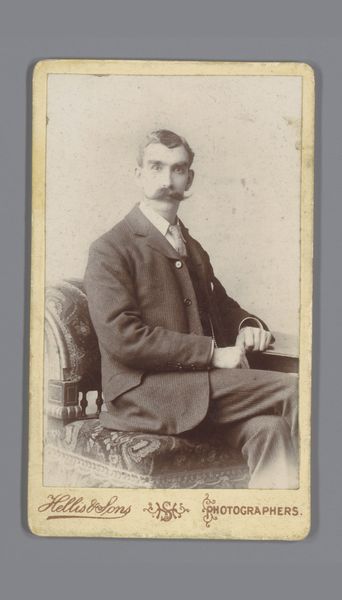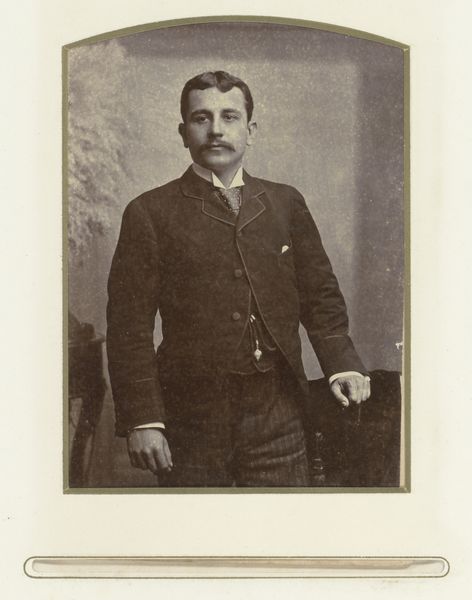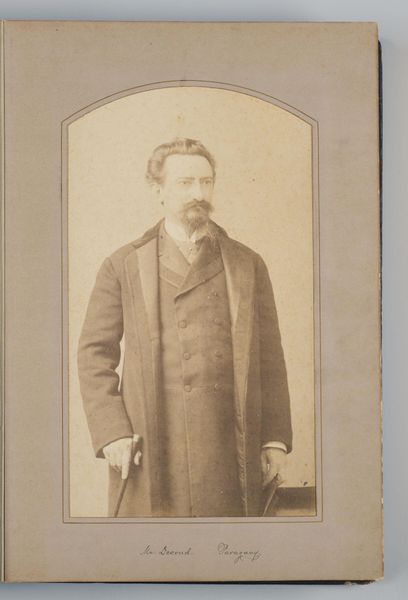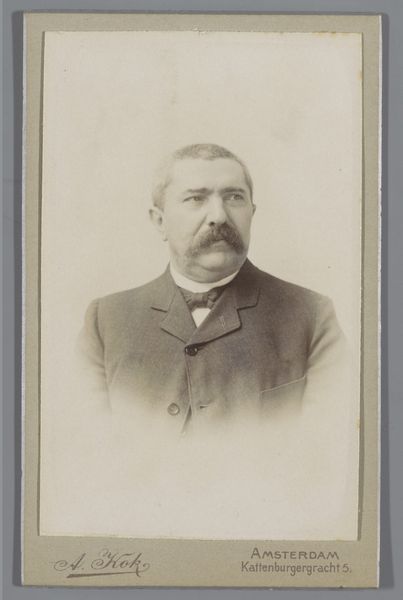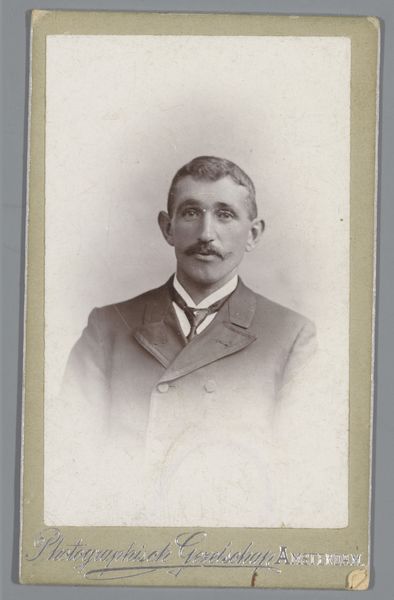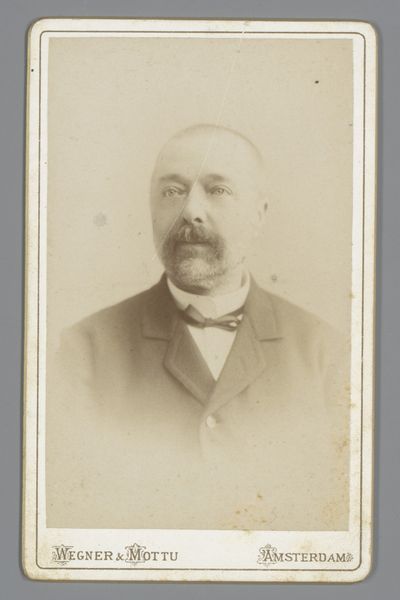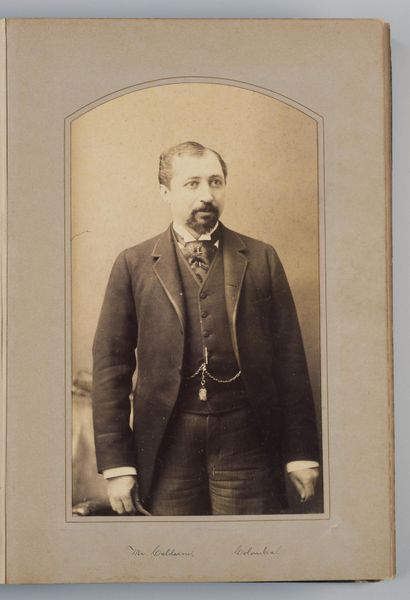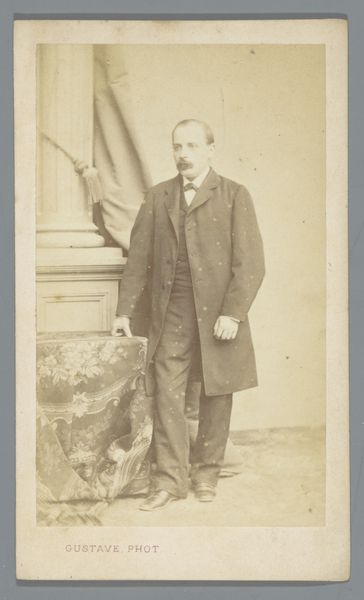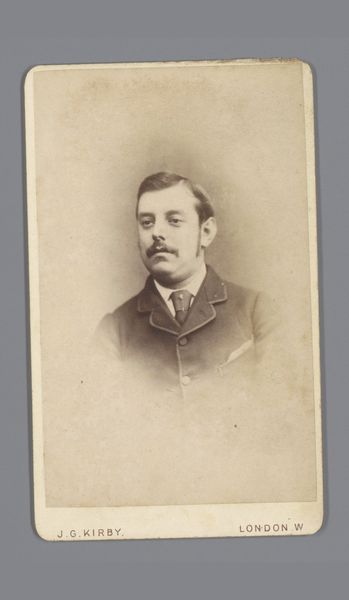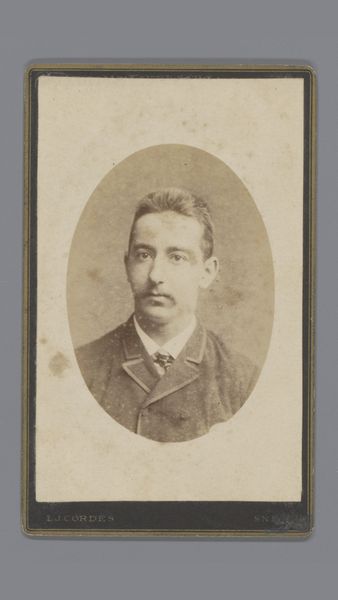
photography, gelatin-silver-print
#
photography
#
historical photography
#
historical fashion
#
gelatin-silver-print
Dimensions: height 106 mm, width 67 mm
Copyright: Rijks Museum: Open Domain
Editor: Here we have a gelatin silver print entitled "Portret van een onbekende man," dating from around 1880 to 1905, credited to Johannes Ephraim. It's such a formal portrait, almost like he’s presenting himself to posterity. I am fascinated by the cherub-like sculptural element next to him… How do you interpret this work and the cultural markers that leap out? Curator: What leaps out for me is that performative aspect of “presenting to posterity.” These early portraits functioned almost like secular icons. He is not only an individual, but represents a social role, aspirations of his time, a burgeoning middle class eager to establish itself in the social order, mirrored in his serious expression. What could the cherubs signify within this visual language? Editor: That's an interesting take. I hadn’t thought of it as an icon. Could the cherubs speak to a kind of cultivated romanticism of the era, perhaps a longing for innocence or a connection to classical ideals? Curator: Precisely. Consider the duality: The sober attire, the meticulously groomed mustache—symbols of Victorian seriousness— juxtaposed with those cherubic figures. It highlights a cultural tension between duty and desire, control and release. The photograph encapsulates a transitional moment as society navigates modernity. What does it make you consider? Editor: It really opens my eyes to the layers within what I initially perceived as a simple portrait. The tension between control and the suggestion of liberation through the cherubs gives the portrait more depth than I first imagined. I see him in a new light now. Curator: Indeed. We can never truly "know" this man, but through the symbolic language embedded within the photograph, we can glimpse the cultural currents that shaped his self-presentation, and our understanding of history itself.
Comments
No comments
Be the first to comment and join the conversation on the ultimate creative platform.
